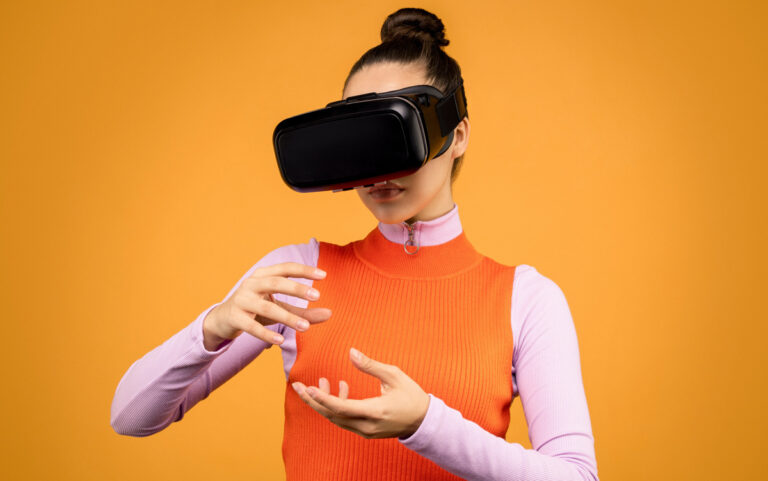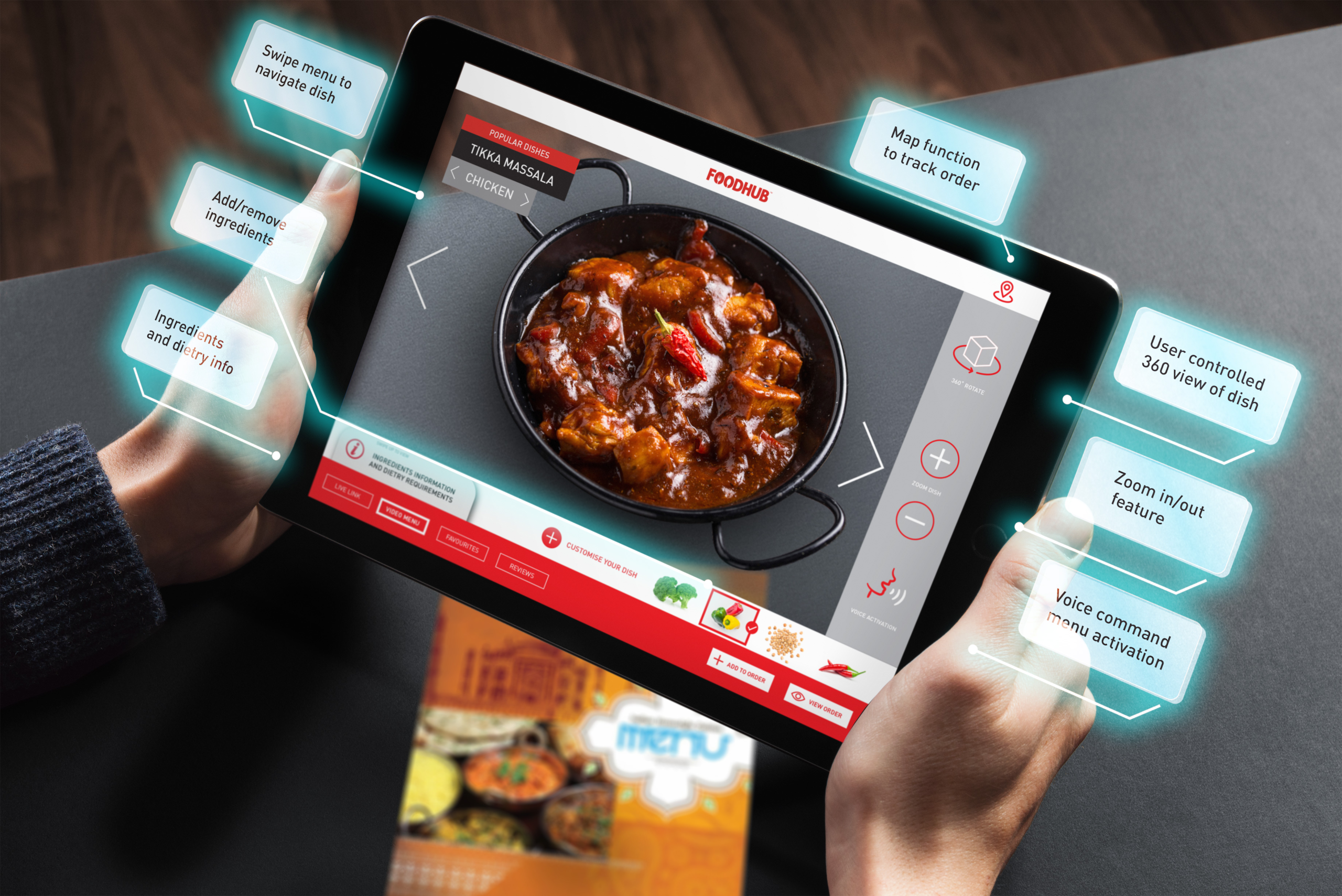Your future Friday night takeaway could come with a side of AR

It’s the early 00s and you’re pressed up close to the TV, the static beaming off as you glide your finger across the screen. You aren’t worried about the square eyes syndrome your parents seem to be deathly afraid of, because you’re utterly mesmerised by the food the magic box is showing you. It is at that precise moment that an idea pops into your head. It’s an unoriginal one. Trust me, we’ve all thought it—Smell-O-Vision.
The idea was first developed as early as the 1960s by a man named Hans Laube—his technique debuted only once. Since then, the innovation has clung on to the imaginations of people everywhere. But what if I told you it could actually be a possibility—that Smell-O-Vision is coming back for good? According to Foodhub CEO Adrian Mula, the food delivery industry is set to be hit by the augmented reality (AR) bug over the next five years in its biggest technological evolution yet.
In a press release shared with Screen Shot, Mula predicted that AR could revolutionise the customer’s experience with ordering their takeaway. The new tech could allow you to enjoy the sights, sounds and (potentially) even the smells—from the comfort of your own home. From this year onwards, Foodhub is set to launch numerous strategies for AR development as part of its business model—placing the “food delivery company at the forefront of the tech revolution.”
The 20,000 already existing restaurant and takeaway partners of the food delivery firm could have access to such ground-breaking tech within the next five years. To Mula, such developments would benefit not only the customer—who will revel in a state-of-the-art experience—but also the business, “I see this technology as being a game changer for both the industry and the takeaway consumer. Imagine as a consumer if you could have the full takeaway experience, using just your smartphone and a pair of goggles?”
“This could allow customers to effectively walk into a takeaway and get the full flavour of the business, from the branding to the shop interior. They could then ‘shop’ their own order, from building a burger to picking a pizza off the shelf, as well as interacting with staff—all from the comfort of their own living room,” Mula continued. Such an advancement in tech is part of the wider conversation around the metaverse and we just can’t seem to get enough of it—take Tinder’s wild VR dating universe.

Mula noted that the COVID-19 pandemic has completely changed the way in which we order and interact with technology. The impact of the pandemic has created the need for a revitalisation of many industries like the food delivery business. While the development of the AR software is set in motion, Foodhub announced as part of its press release that other advancements in tech would be implemented in the meantime—placing efficiency at the forefront of this new and exciting endeavour.
One of the ways it seeks to do this is by jumping on the possible trend that all takeaways could soon become entirely cashless—only adding to the rise of grocery stores in South Korea that have already caught onto interaction-free shopping—implementing alternatives like paying by QR. “QR codes can be printed for pennies, a stark contrast to expensive payment hardware. In global markets such as India, there has been a big emphasis placed on providing businesses with these more affordable technologies, and we see a big opportunity to provide business owners with the chance to save on tech and instead invest elsewhere,” Mula stated.
Other advancements include the update to Foodhub’s software called Fusion 2.0—currently in trial at 100 takeaways across the country—which sees the removal of traditional (and perhaps outdated) tools like tills and printers replaced with a singular device like a smartphone or tablet. While such updates may not be incredibly new to the industry, the food delivery CEO would like independent businesses to have the same access as larger chains.
Some small businesses seem to be already benefiting from such technology. Take Natasha Archer of Leeds-based Archers Sweets who has been working with Foodhub tech for under a year, “Over the last few years, we’ve been upgrading our tech capabilities in line with the functions available with the Foodhub platform.”
“As an independent business, using the software developed by Foodhub means we are able to keep up with the biggest players in the industry, something we would struggle to do without access to technologies such as these,” she went on to say.
This is not the first technological advance the food industry has danced with, from robots in the kitchen to vibrators that track your food delivery, Mula predicts that food could soon be delivered by both drones or robots to locations that are difficult to reach by traditional transportation methods. And these upcoming changes may not be all that futuristic—according to Mula, we could have this within a decade.




